SMD Timer NE555 IC SOIC-8
The NE555 SMD Timer IC in SOIC-8 package is a highly versatile and precise timing circuit designed for generating accurate time delays and oscillations. It supports both monostable (one-shot) and astable (oscillating) operation modes, making it ideal for a wide range of electronic applications.
In monostable mode, the timing interval is set by an external resistor and capacitor, while in astable mode, frequency and duty cycle are controlled by two resistors and a capacitor. With adjustable threshold and trigger levels, this IC can source or sink up to 200 mA and operates within a supply voltage range of 4.5 V to 16 V. It is also TTL-compatible when powered by a 5 V supply, ensuring compatibility with various digital circuits.
This surface-mount IC is perfect for compact designs, offering reliable performance for hobbyists and professionals alike. Add the NE555 to your projects for robust timing solutions.
.

- Ground (GND): This is the reference voltage against which all other voltages are measured. It connects to the circuit’s ground or the negative terminal of the power supply.
- Trigger (TRIG): When a voltage on this pin drops below half of the control voltage (typically 1/3 of the VCC if the control voltage is not externally defined), the output becomes high and the timer activates.
- Output (OUT): This pin can either source or sink current. It’s the main output of the timer. Depending on the mode of the 555 timer, the output pin might produce a continuous square wave (Astable mode) or a single pulse width (Monostable mode).
- Reset (RESET): When a negative pulse is applied to this pin, the timer resets and the output goes low. If the reset functionality isn’t required in a circuit, this pin is typically connected to VCC to prevent unintended resets.
- Control Voltage (CV): An external voltage applied to this pin can be used to modulate the threshold and trigger levels. If not being used for modulation, a small ceramic capacitor (like 0.01μF) is typically connected to ground to filter noise.
- Threshold (THRESH): Compares the voltage applied to it to a reference voltage (usually 2/3 VCC). In many timer circuits, this pin is directly connected to the external capacitor that dictates the timing of the circuit.
- Discharge (DISCH): Connected internally to an NPN transistor, this pin is primarily used to discharge the external timing capacitor.
- VCC: This pin powers the 555 timer and can typically accept voltages between 4.5V and 15V.
Features :
- Timing capabilities from microseconds to hours
- Supports both astable and monostable operation modes
- Adjustable duty cycle for flexible waveform generation
- TTL-compatible output for seamless integration with digital circuits
- High output current: up to 200 mA (source or sink)
- Low turn-off time for efficient operation
- Maximum operating frequency exceeding 500 kHz
- Exceptional temperature stability: 0.005% per °C
Specifications :
| Product Attribute | Attribute Value |
| Series: | NE555 |
| Type: | Standard |
| Number of Internal Timers: | 1 Timer |
| Supply Voltage – Max: | 16 V |
| Supply Voltage – Min: | 4.5 V |
| Minimum Operating Temperature: | 0 C |
| Maximum Operating Temperature: | + 70 C |
| Mounting Style: | SMD/SMT |
| Package/Case: | SOIC-8 |
| High-Level Output Current: | 200 mA |
| Low-Level Output Current: | – 200 mA |
| Operating Supply Current: | 2 mA |
| Subcategory: | Clock & Timer ICs |
Applications :
- Tone generation for audio circuits
- LED blinking circuits for visual indicators
- One-shot timer applications for precise delays
- Pulse width modulation (PWM) for motor control and dimming
- Oscillators for clock signals
- Delay timers for automation
- Flip-flops and digital memory devices
- Hobby and industrial projects requiring accurate timing
Overall Operation
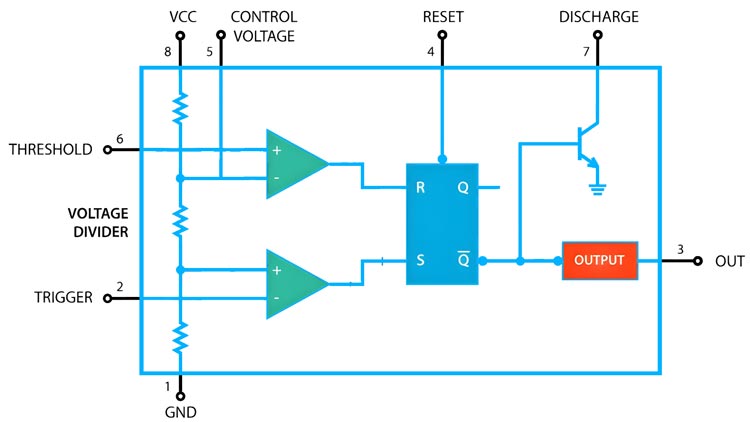
Internally, the 555 chips layout can be visualized as a block diagram featuring 2 comparators, a flip-flop, a voltage divider, a discharge transistor, and an output stage. This voltage divider, in particular, comprises three 5k resistors, setting two reference voltages at 1/3 and 2/3 of the supplied voltage (which varies between 5 and 15V). Comparators within the 555 Timer act as voltage comparison units; their function is to compare analog inputs and produce outputs accordingly. The interaction between the “Trigger,” “Threshold,” and “Control” pins directly influences the comparators’ output. This output is channeled into a flip-flop, which toggles based on the input conditions and can be overridden using an external “Reset” pin. Concluding the internal setup, the flip-flop’s output feeds into drivers capable of managing up to 200mA and a transistor connecting the “Discharge” pin to the ground.
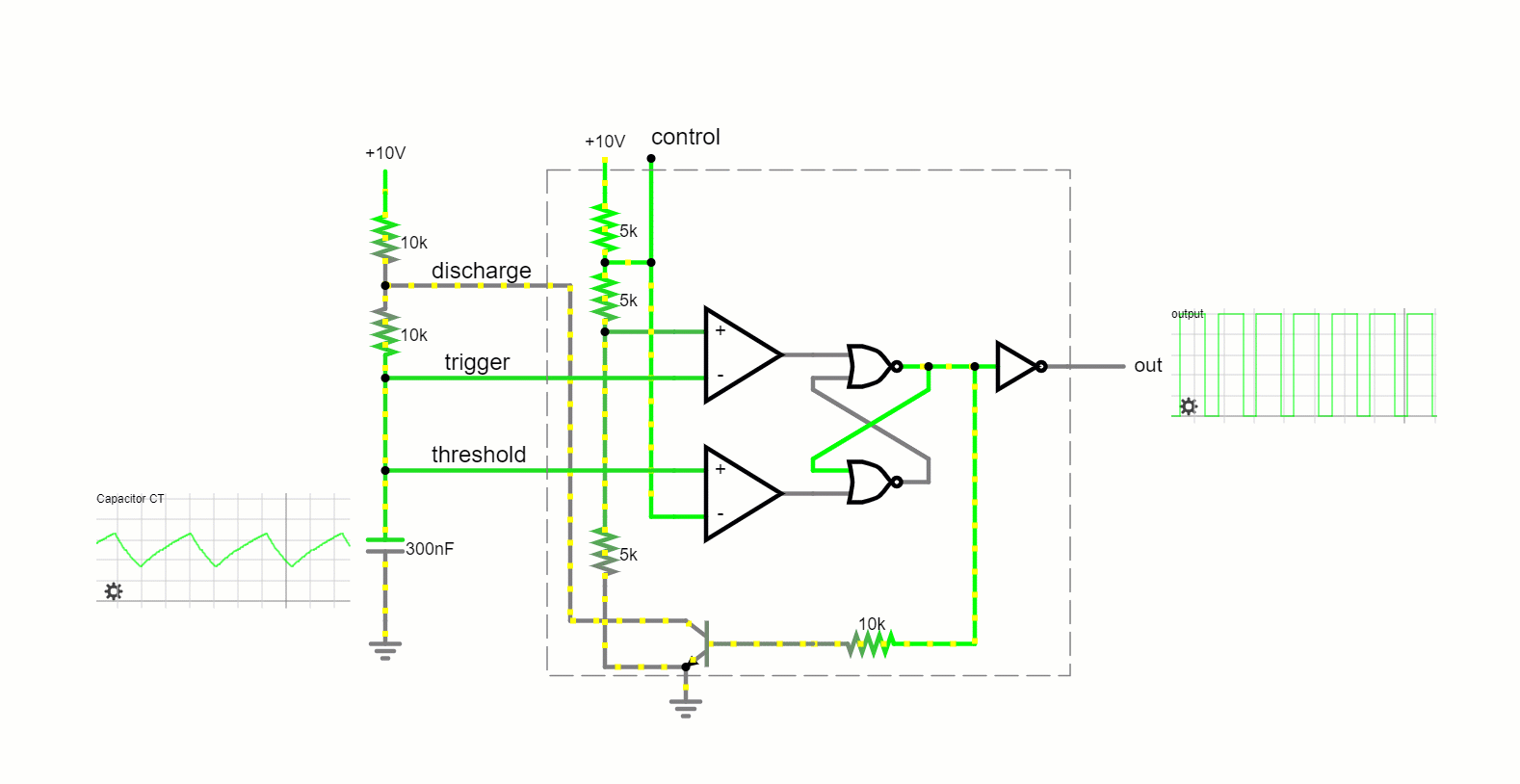
Operating Modes
Astable Mode:
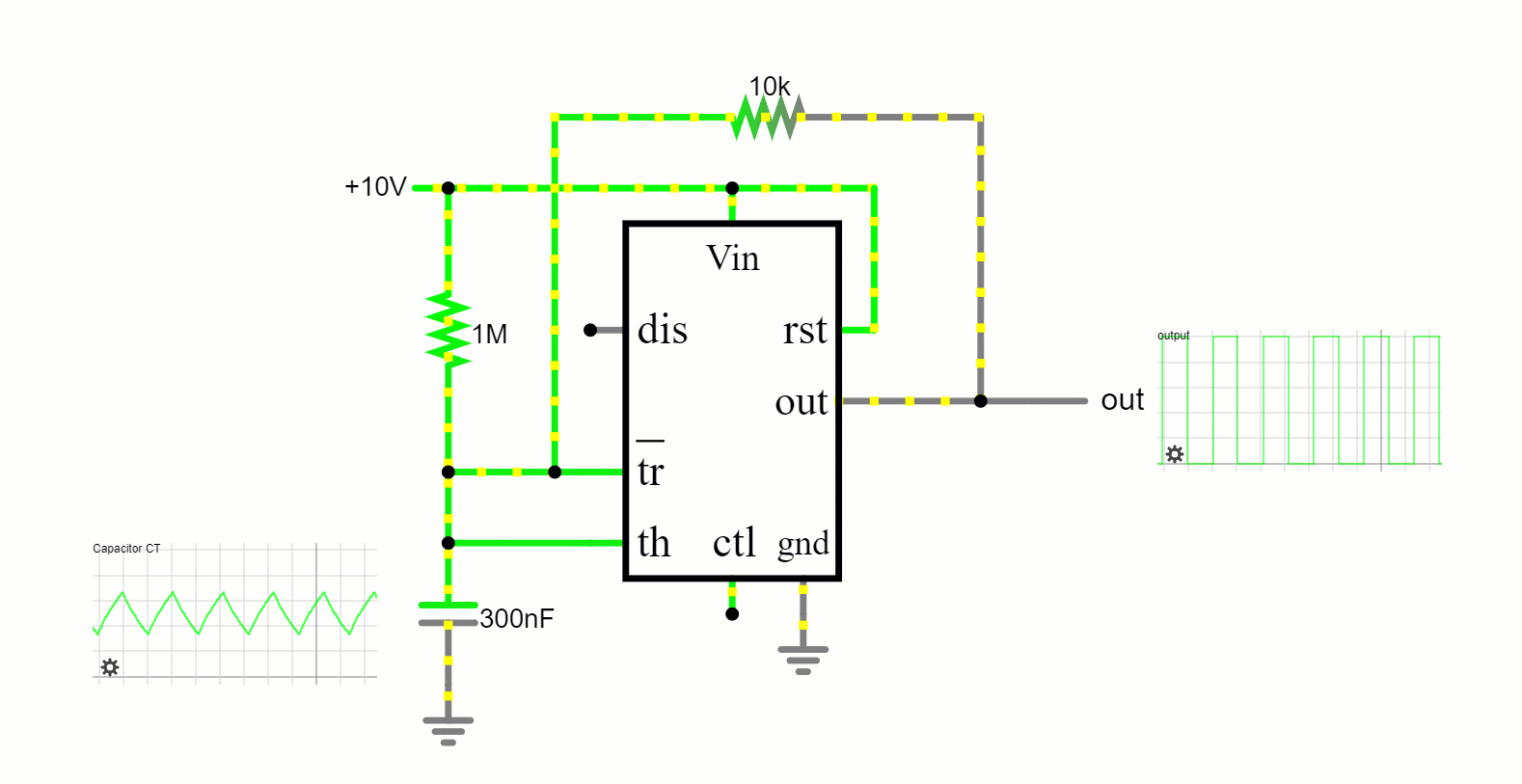
In this free-running mode, the 555 timer oscillates endlessly, transitioning between its high and low states, producing a continuous square wave output. This makes it apt for applications like tone generation and LED blinking.
Monostable Mode
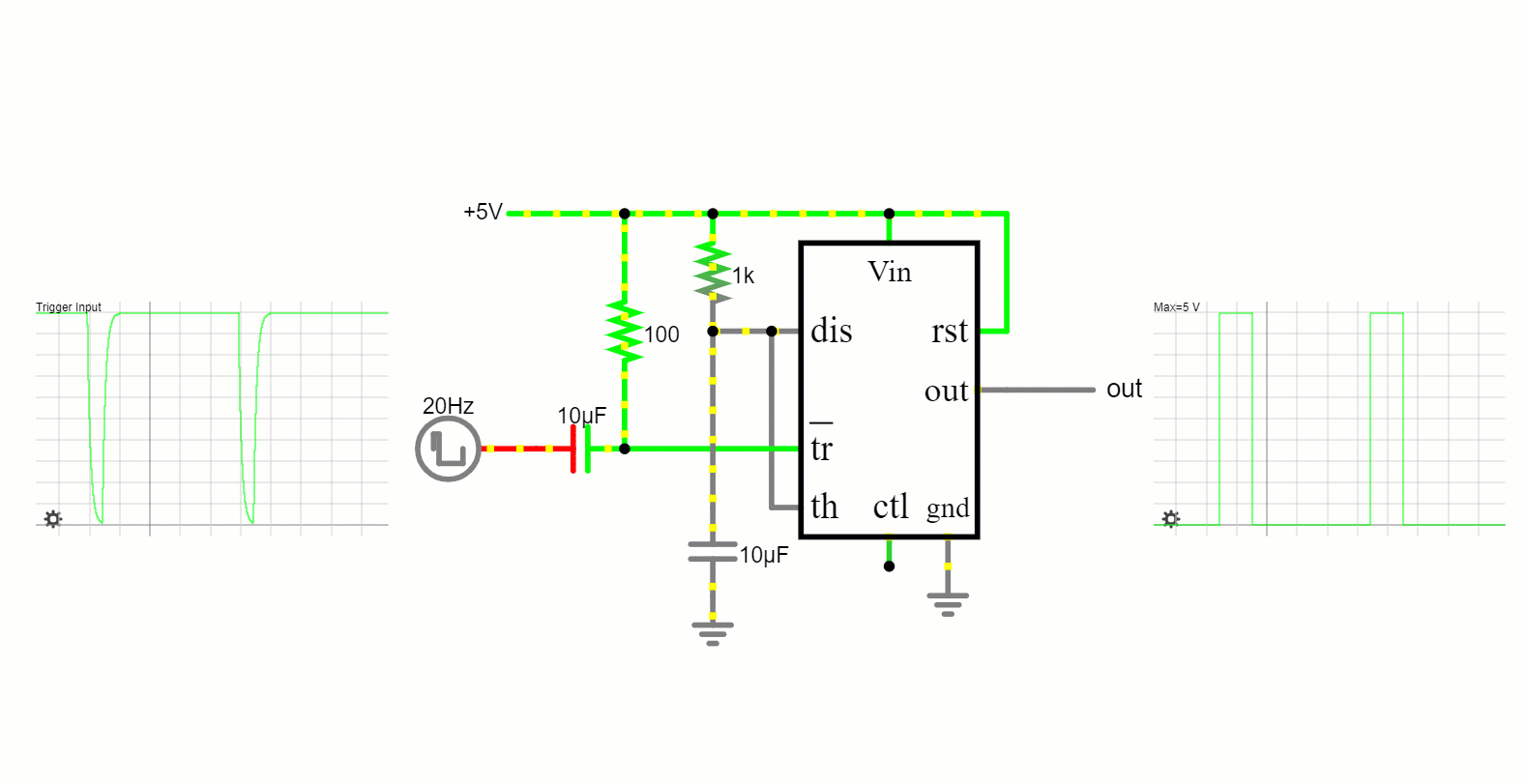
The 555 timer in this mode functions as a one-shot timer. It remains in its low state until triggered, after which it produces a high pulse for a defined period and then reverts to its low state.
Bistable Mode











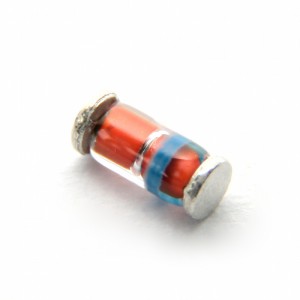
Reviews
There are no reviews yet.